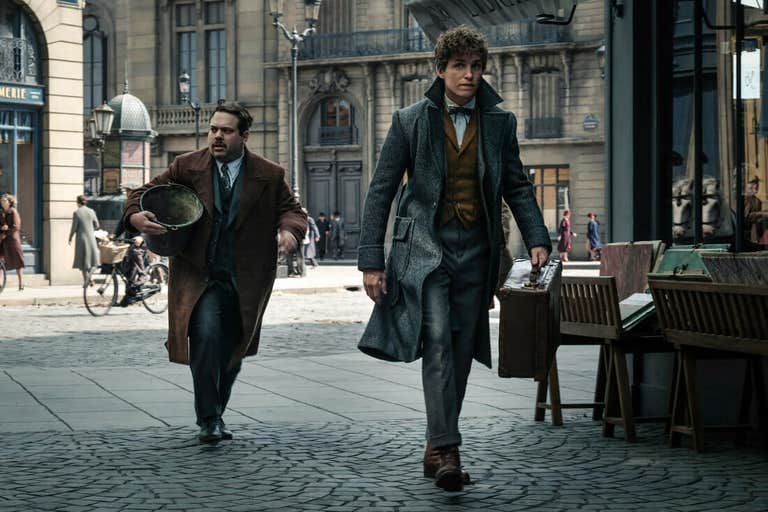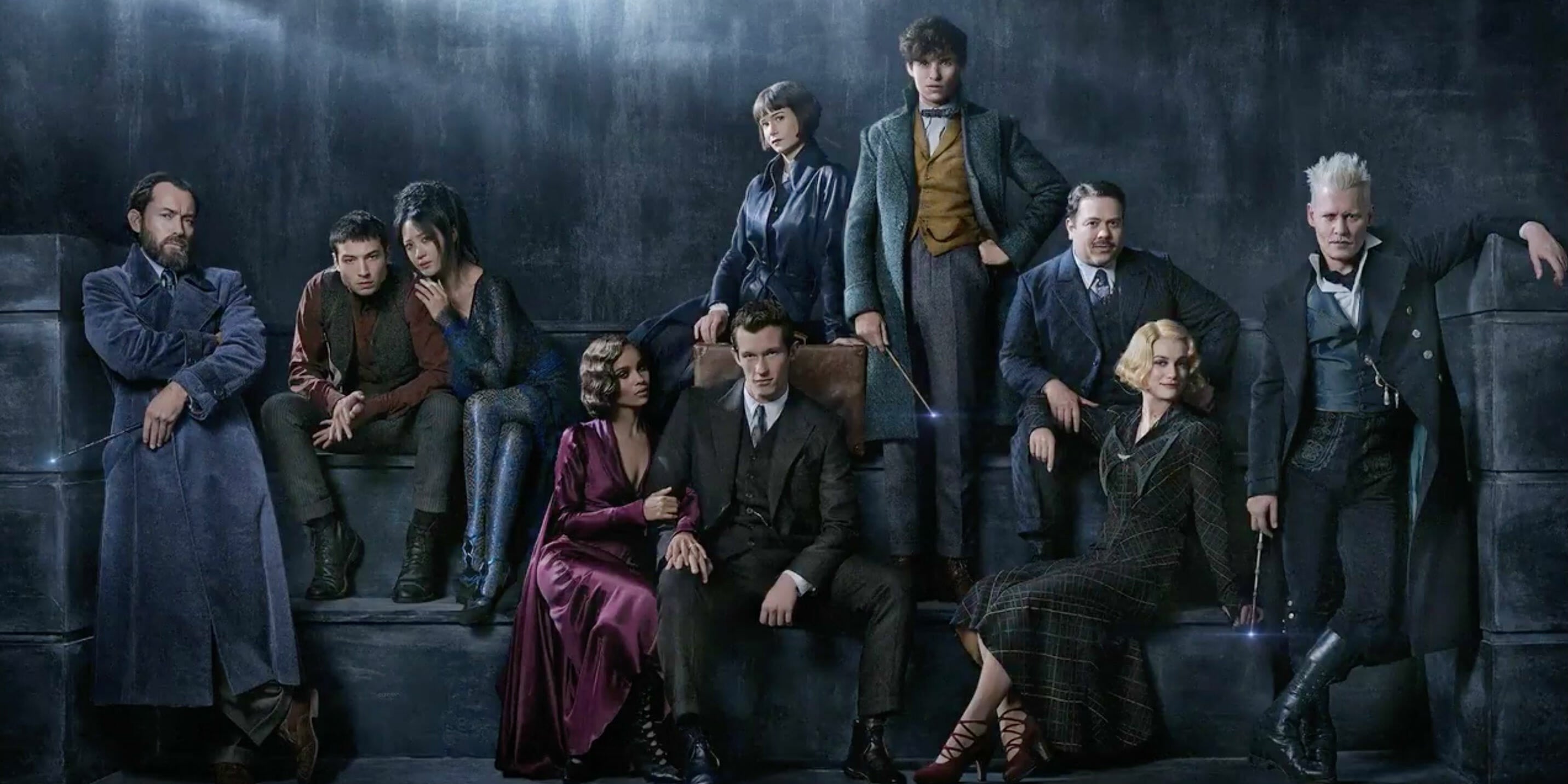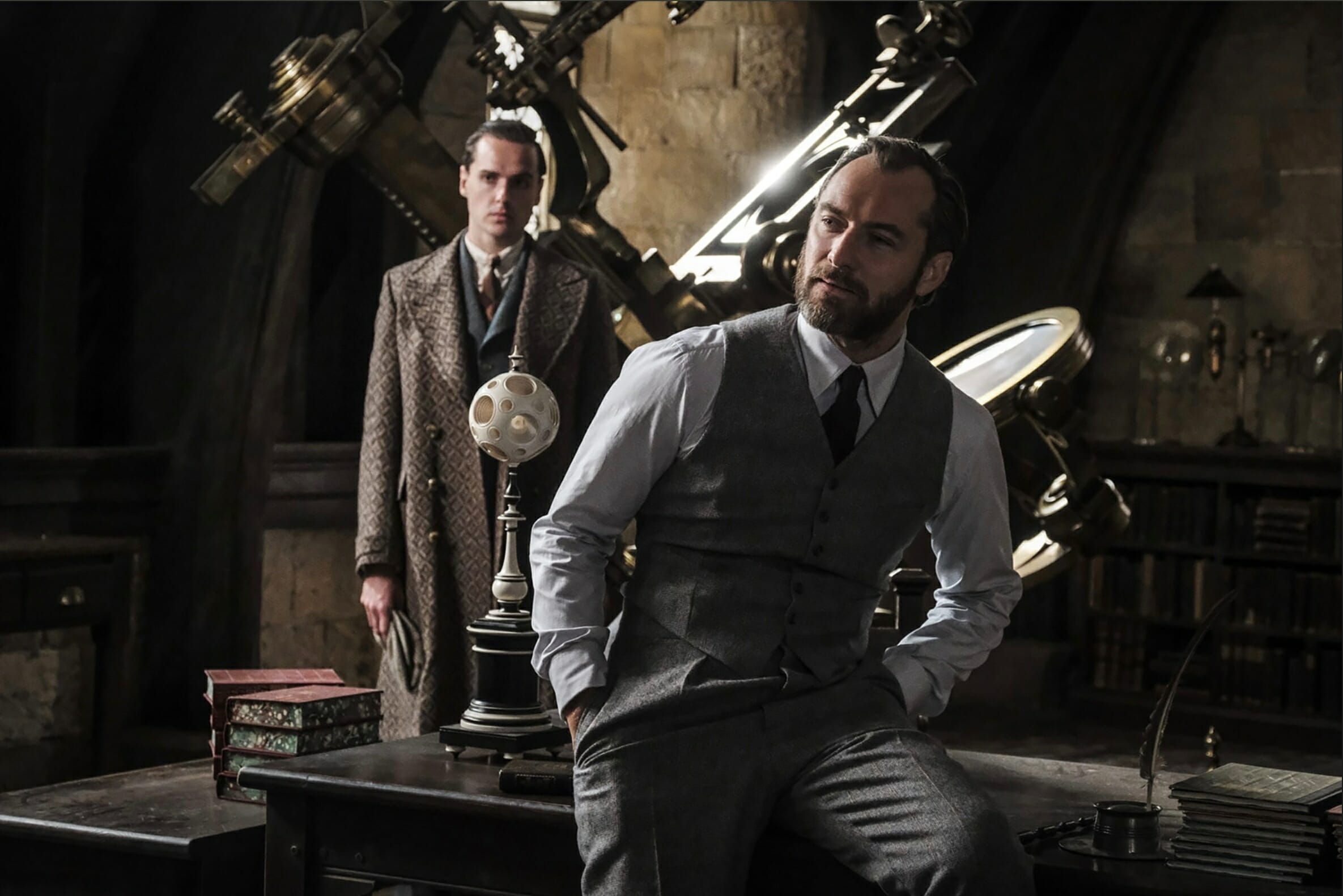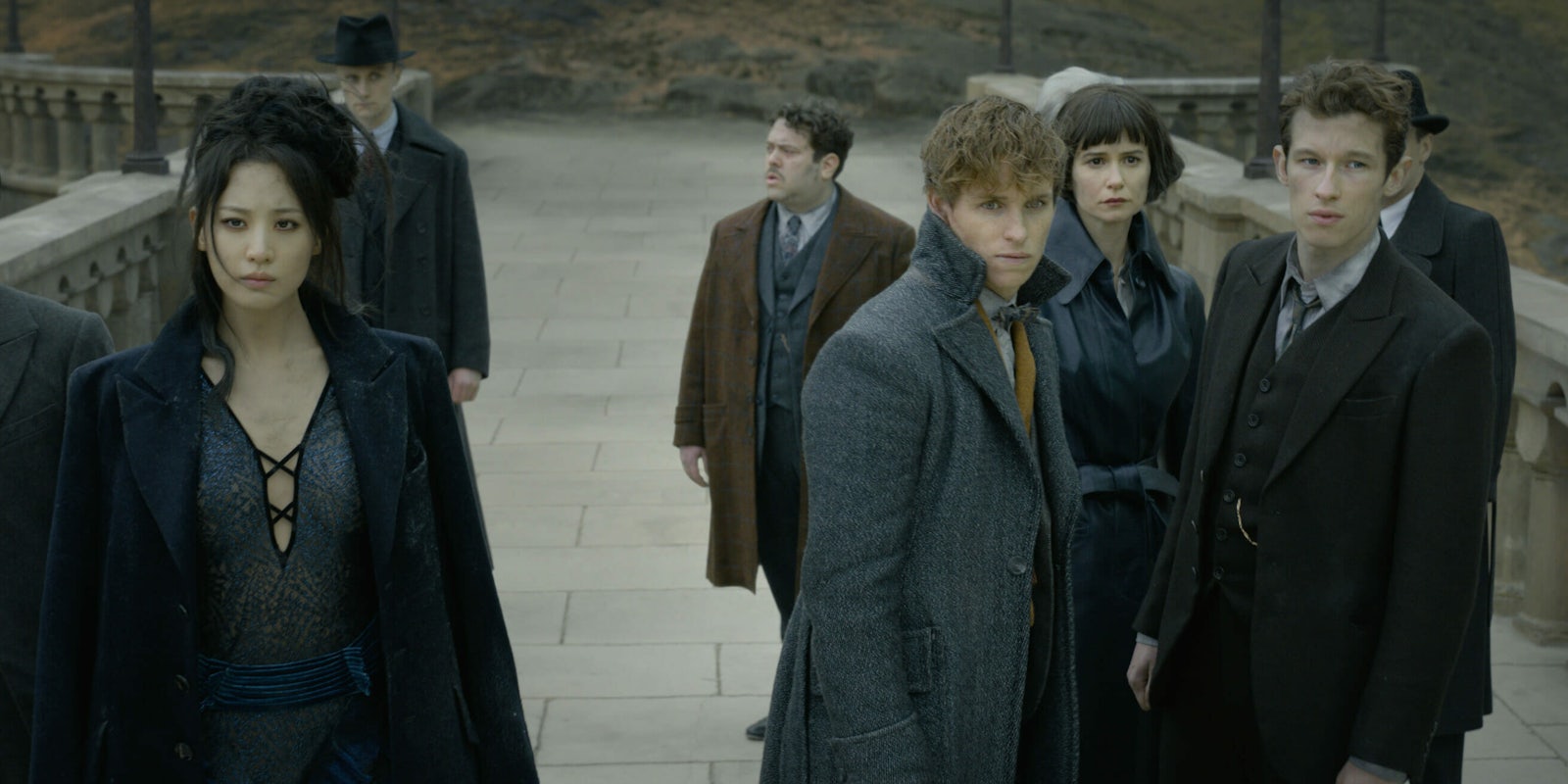The costume design of J.K. Rowling’s Wizarding World no longer makes any sense. In an apparent attempt to make the Fantastic Beasts films look less fantastical, wizards now dress exactly like muggles. This may sound like a nitpick, but in a story about the rigid cultural divide between two worlds, it’s a real problem.
Fashion played a major role in the worldbuilding of the Harry Potter books. Everyone in the wizarding world wears robes, and while they’re expected to blend in when visiting muggle society, purebloods are hopelessly out of touch with non-magical fashion. Some even refuse to wear pants on principal. The movies toned this down, with Hogwarts students wearing something like a graduation gown over a shirt and tie, and adults either wearing long robes (Snape; Dumbledore) or quasi-historical suits (Lucius Malfoy; Sirius Black).
The filmmakers probably decided that floor-length wizard robes would make Harry less relatable to modern kids, but there was still a clear visual contrast between the muggle and wizarding worlds. In the Fantastic Beasts movies, that’s no longer the case.

What happened to wizarding fashion?
Set in the 1920s, Fantastic Beasts introduced the idea that American wizards are terrified of being discovered and persecuted by muggles. That may explain why characters like the Goldstein sisters essentially dress like muggles: They’re trying to blend in. But as we move into the international setting of The Crimes of Grindelwald, this explanation no longer holds water. We know from the books that Britain has a distinctive magical culture, with xenophobic purebloods taking pains to differentiate themselves from muggle society.
In London and Paris, we’re presented with clashing visions of magical life. The plot revolves around Grindelwald’s quest for magical supremacy, viewing muggles as a separate, second-class species. Fiercely proud of their heritage, his followers are horrified by the idea of muggles contaminating their culture. (Yes, it’s an intentionally obvious allegory for the rise of the Nazis.) The legal restrictions on wizard/muggle interaction are meant to be harsher than in the Harry Potter era, including an American ban on intermarriage. However, the film’s visual worldbuilding totally contradicts this. At a glance, wizards are indistinguishable from muggles, suggesting a close cultural overlap.

It feels treacherous to say this about costume designer Colleen Atwood, a four-time Oscar-winner, but while those 1920s overcoats look beautiful, they detract from the film’s fantasy setting. First of all, wizarding identity developed separately from muggle society, with conservative purebloods viewing muggleborns as an unwanted immigrant population. Secondly, the similarities between muggle and wizarding costumes cause a practical problem during crowd scenes. It’s often hard to tell if certain scenes take place in muggle or magical locations, so we don’t know if the main characters are causing an international incident by performing magic in public.
Even Grindelwald just looks like a slightly odd muggle, when you’d expect him to be as wizardly as possible. In fact, he kind of looks like a generic Johnny Depp character, which makes sense because Depp had a lot of input into his costume.
Dumbledore’s unwanted makeover
In the books, Dumbledore is a consistently flashy dresser. His wardrobe consists of things like “long robes, a purple cloak that swept the ground, and high-heeled, buckled boots,” and at one point when he visits the muggle world, he wears a plum-colored velvet suit. Obviously, there’s no need to recreate this level of detail on-screen, but taken as a whole, Dumbledore’s dress sense is a key element of his character. It’s more important than Harry and Ron wearing muggle clothes (which makes no difference to the story), because Dumbledore’s quirky fashion sense is, in some ways, a strategic move. His love of flamboyant robes ties into his image as a twinkly-eyed eccentric, leading people to underestimate his power and intellect.

Meanwhile, Dumbledore’s costume in The Crimes of Grindelwald is completely unrecognizable: a grey tweed suit that might as well come from Jude Law’s own wardrobe. It tells us nothing about Dumbledore’s personality. He doesn’t even look like a wizard; he could be a character in any 20th-century historical drama.
This creative choice isn’t just an issue for canon-obsessed fans, it signals a change in Dumbledore’s characterization. It also says a lot about what the filmmakers value in a male lead. They stripped away Dumbledore’s frivolity, focusing instead on his role as a political leader. His conservative, traditionally masculine appearance now resembles the tightly-wound bureaucrat Barty Crouch Sr. And yes, this may have something to do with Dumbledore’s sexuality. Dumbledore is gay, and perhaps out of a well-meaning desire to avoid stereotypes, The Crimes of Grindelwald erased any hint of effeminacy or eccentricity from his image. They gave him a makeover to look more straight.
If the next movie delves into Dumbledore’s sexuality, he’ll be one of the first queer leads in a Hollywood blockbuster. That’s a tricky situation for J.K. Rowling and director David Yates because they’ll want to avoid homophobic stereotypes. This concern is why mainstream TV shows often play it safe by including queer characters who essentially pass as straight. It’s still pretty rare to see dramas like Sense8 and Orange Is the New Black, which explore a diverse range of queer identities and gender expressions. As for big franchise movies, we’re still at a point where Star Trek Beyond made headlines with a tiny cameo for Sulu’s husband, and the only superhero film with queer characters is the R-rated Deadpool. Dumbledore coming out would be a groundbreaking moment, and it kind of feels like Warner Bros. is repackaging him to be as uncontroversial as possible.
No one expects the Fantastic Beasts franchise to be radical, but its portrayal of Dumbledore sends a clear message. Even before Rowling revealed that Dumbledore was gay, he represented the idea that you can be powerful, respected, and beloved while also being a fun-loving nonconformist. He wears colorful, sparkling robes. Music brings a tear to his eye. He makes silly jokes and pokes fun at people who take themselves too seriously. Law’s Dumbledore seems like the filmmakers looked at these traits and asked, “Wouldn’t it be better if he was a more traditional leading man?” So The Crimes of Grindelwald emphasizes Dumbledore’s aggressive, manipulative side, with Law buttoned up in a sedate three-piece suit.
Dumbledore’s makeover is a microcosm of how The Crimes of Grindelwald’s costume design sucks the magic out of Harry Potter. While the special effects team had fun designing wacky magical creatures, the costumes follow the muted palette of a gritty historical drama, seemingly afraid to admit this is a fantasy movie. And with so little visual distinction between muggles and wizards, they actually undermine the film’s worldbuilding.


